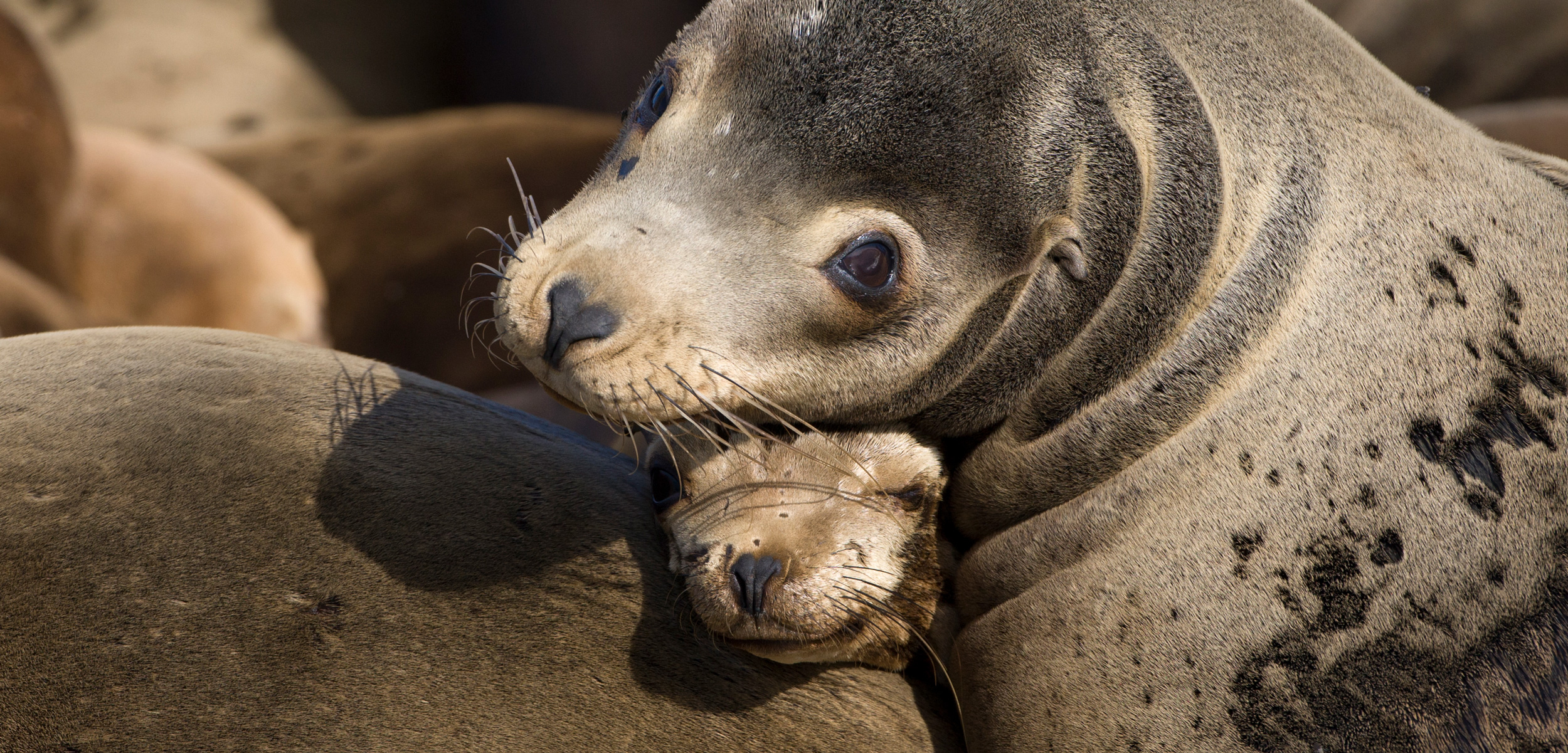Hypothesis Confirmed: Sea Lion Mass Deaths Caused by Malnutrition
The warm water Blob hurt a generation of sea lions.
Article body copy
Meteorologists had never seen anything quite like it—a mass of abnormally warm surface water that overwhelmed much of the northeastern Pacific Ocean for three years starting in late 2013. They called it the Blob.
Within months, thousands of starving sea lion pups began washing ashore along the west coast of the United States.
At the time, scientists figured the two occurrences were related. But in a new study, a team of researchers describes in detail how warm water and related impacts on ocean productivity hurt the young sea lions.
Scientists believe the Blob began to form in the Gulf of Alaska after the winds that drive the upwelling of nutrient-rich cold water from the seafloor to the surface weakened or died, allowing surface water to grow unusually warm and slowing the production of phytoplankton. At the same time, farther south, El Niño was disrupting ocean circulation. The resulting masses of warm, nutrient-poor water being formed in the north and south joined up, and the so-called Blob settled in for a three-year stay off the coast of California.
The Blob hit the sea lions when reduced primary production sent forage fish, such as anchovies and sardines, elsewhere, says study coauthor Karina Acevedo-Whitehouse, a disease ecologist at the Autonomous University of Queretaro in Mexico.
Without their usual prey, hungry sea lions turned to rockfish, “which is like junk food for sea lions,” Acevedo-Whitehouse says. Oily forage fish pack a nutritional punch; white-fleshed Pacific rockfish do not.
After analyzing blood samples and the blood glucose levels of nursing sea lion pups off Baja California, the authors concluded that lactating sea lions were unable to provide adequate nutrition for their pups. This had a devastating effect on an entire generation of sea lions.
In 2013, US government biologists counted nearly 1,500 emaciated sea lion pups and yearlings washed ashore in California. The number of observed strandings dropped the next year, but exploded in 2015 to more than 2,500—about 10 times the average annual rate. With a large population of at least 300,000, California sea lions are not a conservation concern, Acevedo-Whitehouse points out. “But because they’re high on the food chain and they live for a long time, they are a great indicator species—a biomonitor of what’s happening in the whole ecosystem.”
Indeed, the same unusual conditions that affected sea lions sent ripples throughout the eastern Pacific. Seabirds that nest on the Farallon Islands, offshore from San Francisco, went hungry as fish populations diminished. This affected their reproductive success.
“They just didn’t bother trying to breed,” says David Ainley, a marine ecologist who has studied seabirds for more than four decades.
Warmer waters contributed to a die-off of California’s famed kelp forests, causing red abalone to starve. In 2015, the high sea surface temperature also caused large blooms of toxin-producing algae, which further contributed to the sea lions’ plight. Subtropical pelagic crabs also swarmed northward along the California coast.
“This created a huge food source for bluefin tuna that came much closer to shore than usual,” says Elliott Hazen, a research ecologist with the US National Oceanic and Atmospheric Administration (NOAA).
The unusual sea surface temperature patterns even contributed to more humpback whales than usual becoming snared in crab fishing gear, says Karin Forney, a NOAA scientist who studies marine mammals. Anchovies congregated unusually close to the coast, she explains, which drew in the whales. This led to the high rates of entanglement in 2016.
“It was a bit of a perfect storm of a lot of different factors,” Forney says, “and a lot of it started with the warmer waters.”
Sea surface temperatures have dipped since the peak of the Blob-driven sea lion starvation, says Acevedo-Whitehouse. Yet as much of the ocean warms with climate change, she expects similar events to occur.
“The Blob caught us all off guard, so it’s hard to say when something like this could happen,” she says.

